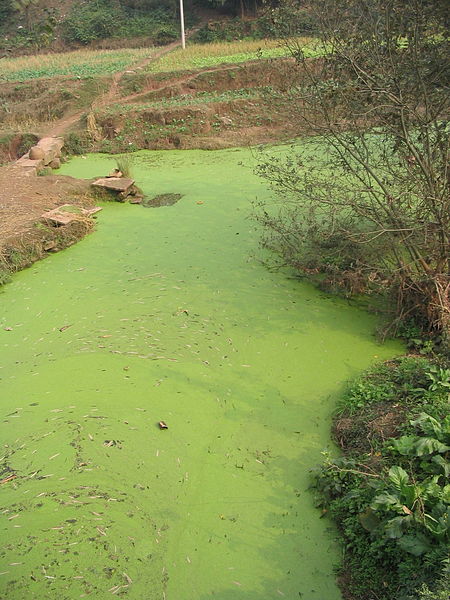Food and Sex
Nutrition
As a heterotrophic organism, this species can acquire its
nutrients through its cell wall from either its aquatic environment or from its host, but it
cannot produce its own food. This classifies it as either a
primary consumer or
parasite. Since it is a facilitative
bacteria, it can breakdown its
 nutrients either aerobically or anaerobicly through respiration or fermentation. Once digested,
the nutrients are stored as starch, like most other
proteobacteria.
nutrients either aerobically or anaerobicly through respiration or fermentation. Once digested,
the nutrients are stored as starch, like most other
proteobacteria.
In aquatic environments, it commonly forms a biofilm on the
surface of the water, on the surface of suspended detritus, and
on the sediment surface. These areas are favorable because microorganisms accumulate more heavily on
these surfaces and Aeromonas hydrophila tends to grow
more rapidly where there are nutrient components of low molecular
weight. For example, algae that is found on the surface of water
attracts the bacteria which feed on this important primary
producer. Additionally, it is able to utilize a large variety of
biopolymers, such as proteins, carbohydrates, and lipids which
are found most conveniently on decomposing aquatic macrophytes.
In a host, it is also able to break down hemoglobin for nutrient
uptake. Even though it has adapted strongly to living in a host, when it
is exposed to such rich nutrients in water, it can multiply and
survive just as well in aquatic
environments.
Reproduction
This organism uses binary fission as a means of reproduction.
This is a relatively quick and simple process and many bacteria undergo
this type of asexual reproduction. First, the cell copies its
genetic material (DNA). The two copies are then sent to the
opposite ends of the cell. Then, proteins that enable the
division of the cell to take place assemble in the middle of the
cell (the division line). The cytoplasm then divides and a new
cell wall is synthesized. Reproduction occurs due to signals
from the bacteria which are usually triggered when it has
entered a host, but may also be triggered in response to extensive nutrients as a free-living organism. In these cases, it typically begins to reproduce
rapidly to form a colony or biofilm. In aquatic environments, the rate of
reproduction depends on residual disinfectant, dimensions of the
network, residence time, water temperature, and concentration
and type of food sources available. For example, in mildly harsh environments such as cold
temperature (5°C), the bacteria
usually do not get damaged or die, but they do not expend their
energy on reproduction.
Lastly, interfering with the steps of binary fission is a
potential target in creating antibiotics for bacterial
infections like this. However, because the bacteria are able to
multiply so rapidly, they are able to quickly build resistance
to antibiotics through the selection of resistant mutants. For
more on antibiotic resistance, due to either natural selection
or improper antibiotic usage, check out this
ScienceDaily article.
extensive nutrients as a free-living organism. In these cases, it typically begins to reproduce
rapidly to form a colony or biofilm. In aquatic environments, the rate of
reproduction depends on residual disinfectant, dimensions of the
network, residence time, water temperature, and concentration
and type of food sources available. For example, in mildly harsh environments such as cold
temperature (5°C), the bacteria
usually do not get damaged or die, but they do not expend their
energy on reproduction.
Lastly, interfering with the steps of binary fission is a
potential target in creating antibiotics for bacterial
infections like this. However, because the bacteria are able to
multiply so rapidly, they are able to quickly build resistance
to antibiotics through the selection of resistant mutants. For
more on antibiotic resistance, due to either natural selection
or improper antibiotic usage, check out this
ScienceDaily article.
Next, there are many adaptations that allow this species
to survive and reproduce so successfully.
To return to the home page, click
here.